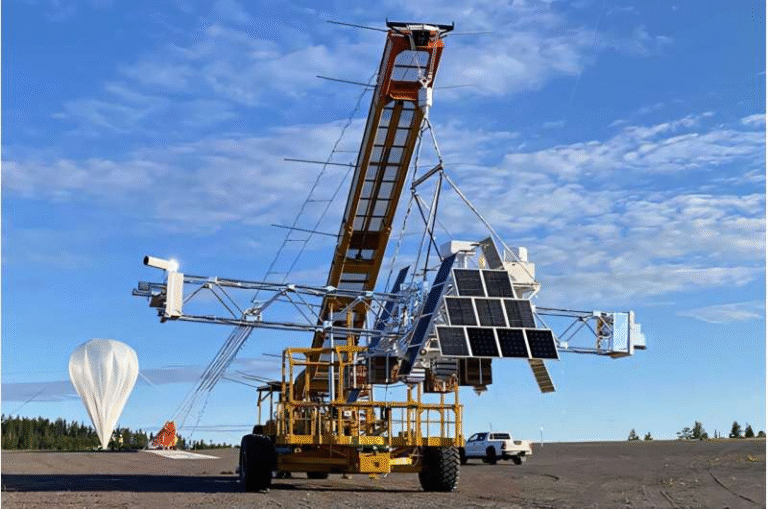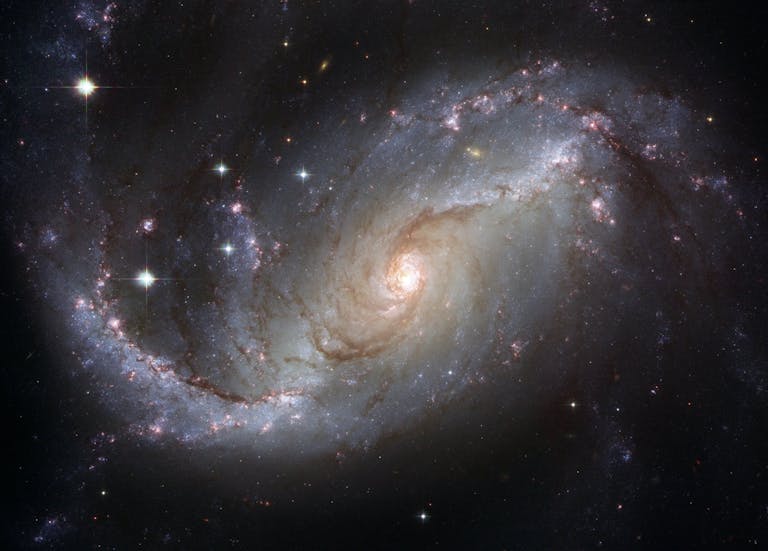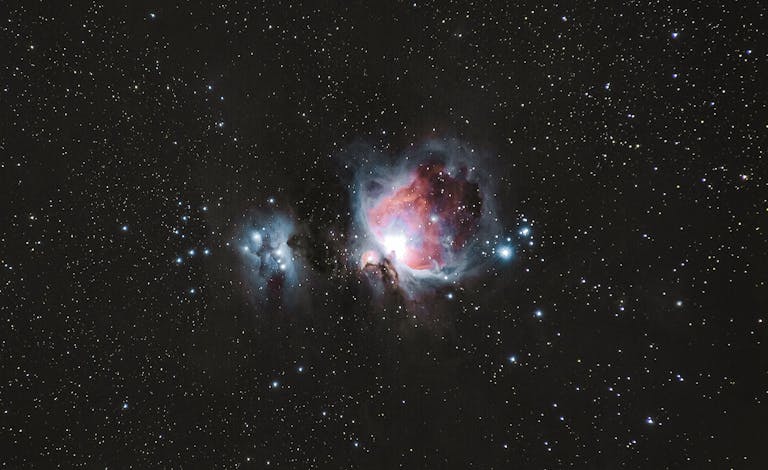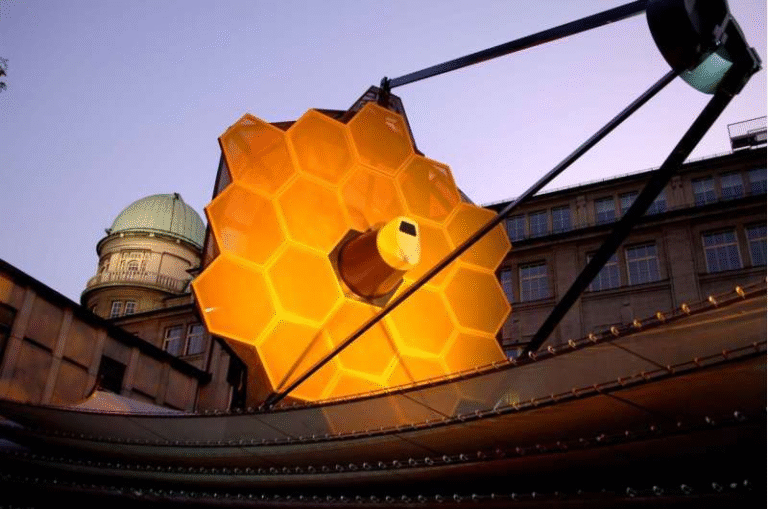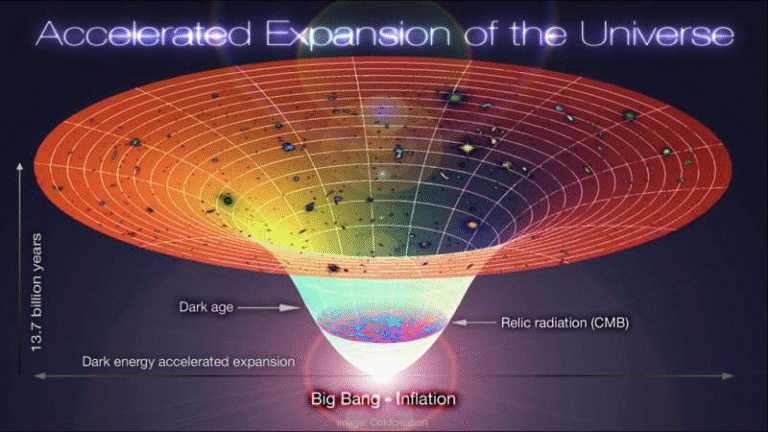Astronomers Spot a Gigantic Hydrogen Gas Bridge Linking Two Dwarf Galaxies
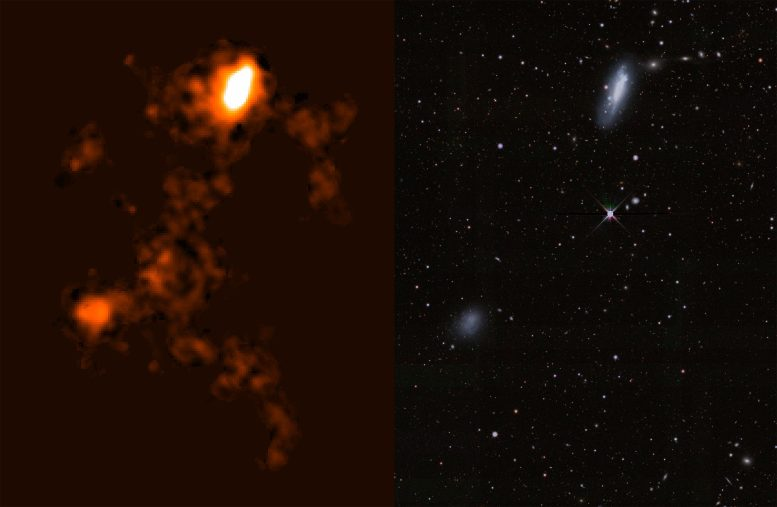
Astronomers have uncovered something extraordinary: a colossal bridge of neutral hydrogen gas connecting two dwarf galaxies, NGC 4532 and DDO 137, located around 53 million light-years away from Earth. The discovery not only reveals the largest known hydrogen gas structures of its kind but also sheds light on how galaxies interact, evolve, and lose their gas when moving through dense cosmic environments.
The findings were made by a team from the University of Western Australia’s node of the International Centre for Radio Astronomy Research (ICRAR), using data from the Widefield ASKAP L-band Legacy All-sky Survey (WALLABY). The work was published in the Monthly Notices of the Royal Astronomical Society on September 24, 2025.
The Cosmic Bridge and Gas Tail
The most striking feature identified is a hydrogen gas bridge stretching about 185,000 light-years between the two galaxies. To put that into perspective, the diameter of our own Milky Way is around 100,000 light-years. This makes the bridge almost twice as long as the Milky Way is wide.
Alongside this bridge, astronomers also discovered a massive gas tail extending about 1.6 million light-years, which is the longest of its kind ever detected. This tail had been hinted at in earlier observations, but with the powerful capabilities of the ASKAP radio telescope, the structure could now be mapped in far greater detail.
Both the bridge and the tail are composed primarily of neutral hydrogen (HI), a vital ingredient in the formation of new stars. These gas structures reveal not just the presence of raw star-forming material, but also the physical processes shaping galaxies in regions crowded with other galaxies and hot gas.
How the Bridge Formed
Researchers believe the formation of the hydrogen bridge and the giant tail can be explained by a combination of tidal interactions and ram pressure stripping.
- Tidal interactions occur when galaxies pass close enough to tug on each other with gravity. In this case, the gravitational pull between NGC 4532 and DDO 137 likely displaced hydrogen gas from their outer regions, funneling it into the bridge connecting the two.
- Ram pressure stripping is another key process at play. The two galaxies are moving toward the Virgo cluster, a large collection of galaxies surrounded by a halo of extremely hot gas. As NGC 4532 and DDO 137 move through this hot medium at high speeds, the gas inside them gets stripped away. This effect is similar to how satellites burn up when re-entering Earth’s atmosphere, except on a galactic scale stretched over a billion years.
The Virgo cluster’s gas halo is estimated to be about 200 times hotter than the Sun’s surface, and its electron density is high enough to remove large amounts of hydrogen gas from the galaxies. Combined with their motion (about 880 km/s relative to the cluster environment), this stripping effect explains both the long tail and the diffuse bridge of hydrogen.
A Closer Look at NGC 4532 and DDO 137
Both galaxies are classified as dwarf galaxies, meaning they are much smaller and less massive than giant spiral galaxies like the Milky Way.
- NGC 4532 is an irregular galaxy located in the Virgo constellation.
- DDO 137 (also called IC 3583) is also irregular in shape and lies close to NGC 4532 in space.
Although small, these galaxies are undergoing dramatic changes because of their environment and mutual gravitational pull. The discovery of the bridge and tail highlights that even relatively small galaxies can have large-scale, far-reaching interactions when situated in the right conditions.
Observations with ASKAP and WALLABY
The discovery was made using the Australian Square Kilometre Array Pathfinder (ASKAP) radio telescope, located on Wajarri Yamaji Country in Western Australia. ASKAP is operated by CSIRO, Australia’s national science agency.
The observations were part of WALLABY, a large-scale survey designed to map hydrogen gas across vast regions of the sky. By targeting hydrogen’s unique radio signature at a wavelength of 21 centimeters, astronomers can directly trace where gas resides in and around galaxies.
ASKAP’s wide field of view and sensitivity made it possible to capture the extended hydrogen structures, which would be extremely difficult to observe with optical telescopes. The combination of radio data and existing optical images has provided a clear picture of the gas bridge and tail.
What This Means for Galaxy Evolution
This discovery is much more than just a curiosity. It provides a real-world example of how galaxies evolve when subject to external forces. The redistribution of gas within and around galaxies has significant implications:
- Star Formation: Neutral hydrogen is the raw material for creating stars. The loss of hydrogen gas from galaxies means they will have less fuel to form new stars in the future.
- Environmental Impact: The interaction between the galaxies and the Virgo cluster demonstrates how large-scale environments can affect small galaxies, stripping them of gas long before they even enter the densest regions.
- Comparison with the Milky Way: Interestingly, the system resembles our own Milky Way and Magellanic Clouds, which are linked by a hydrogen bridge known as the Magellanic Stream. This parallel provides a chance to study in detail how such systems behave over time.
By observing systems like NGC 4532 and DDO 137, astronomers gain a clearer understanding of the forces shaping galaxies throughout cosmic history.
Neutral Hydrogen and Its Importance
Because neutral hydrogen plays such a central role in star formation and galaxy evolution, astronomers place special emphasis on studying it. Here are some important points about neutral hydrogen (HI):
- It is detected through its 21-centimeter line emission, which can be observed using radio telescopes like ASKAP.
- HI is typically found in the outer regions of galaxies, forming large halos that extend well beyond the visible stars.
- When galaxies collide or interact, HI is often the first component to be disturbed, producing tidal tails, bridges, and streams.
- Understanding how HI is distributed helps astronomers reconstruct the history of interactions between galaxies and predict how they will evolve.
The discovery of the hydrogen bridge between NGC 4532 and DDO 137 is an outstanding example of how HI reveals hidden connections that would otherwise remain invisible.
Connections to Previous Discoveries
The 1.6 million light-year tail of gas was first noticed in earlier surveys, particularly the ALFALFA survey carried out with the Arecibo telescope. However, ASKAP’s resolution allowed astronomers to better map the structure and confirm its connection to the galaxies.
This system demonstrates that gas structures can extend far beyond the visible limits of galaxies and remain connected over huge scales. Even without stars forming in these regions, the gas itself tells a story about gravitational interactions, motion through hot plasma, and the long-term fate of galaxies.
Why This Matters Beyond Astronomy
While this might seem like a niche cosmic curiosity, the discovery ties into broader questions:
- How do galaxies lose their gas? Without gas, galaxies cannot form stars, meaning their stellar populations eventually fade.
- What role do galaxy clusters play? Clusters like Virgo are among the most massive structures in the universe, and they act like giant cosmic laboratories for studying galaxy transformation.
- Are such bridges common? If other dwarf galaxies also show similar features, it would suggest these processes are a standard stage of galaxy evolution.
This discovery opens the door to re-examining other galaxy pairs and groups for long hydrogen structures that may have been overlooked.
The Bigger Picture
In the vast universe, galaxies are rarely isolated. They tug on each other, collide, and interact with their surroundings. What astronomers have revealed between NGC 4532 and DDO 137 is a vivid example of cosmic recycling: gas stripped from galaxies and redistributed into space, where it might later cool, condense, and form stars in different environments.
The fact that a 185,000 light-year bridge and a 1.6 million light-year tail exist between such small galaxies reminds us how dynamic and interconnected the universe truly is. It also highlights how much more there is to learn, as surveys like WALLABY continue mapping the invisible hydrogen universe on the largest scales ever attempted.
Research Reference: WALLABY pilot survey: the extensive interaction of NGC 4532 and DDO 137 with the Virgo cluster (Monthly Notices of the Royal Astronomical Society, 2025)
